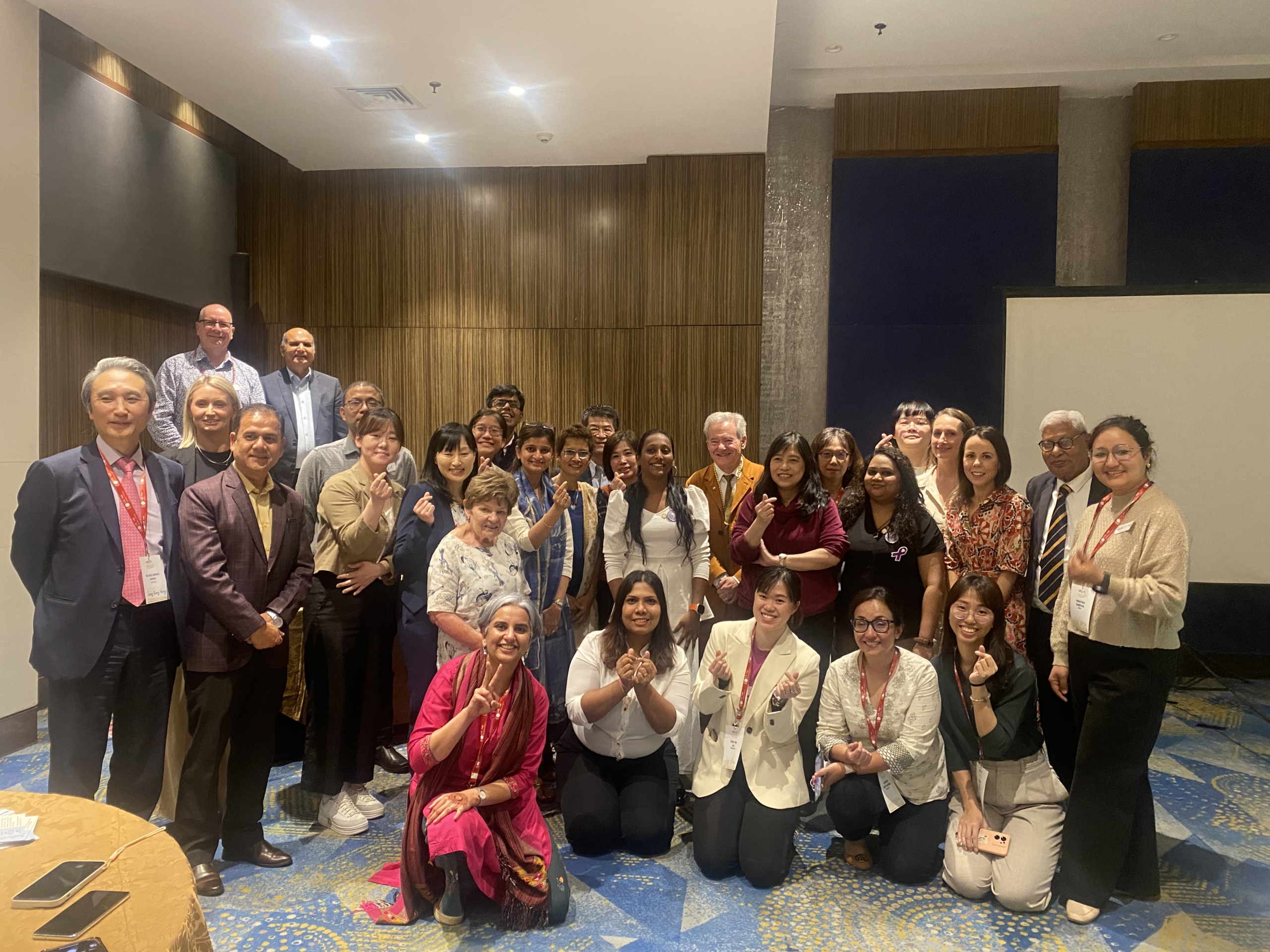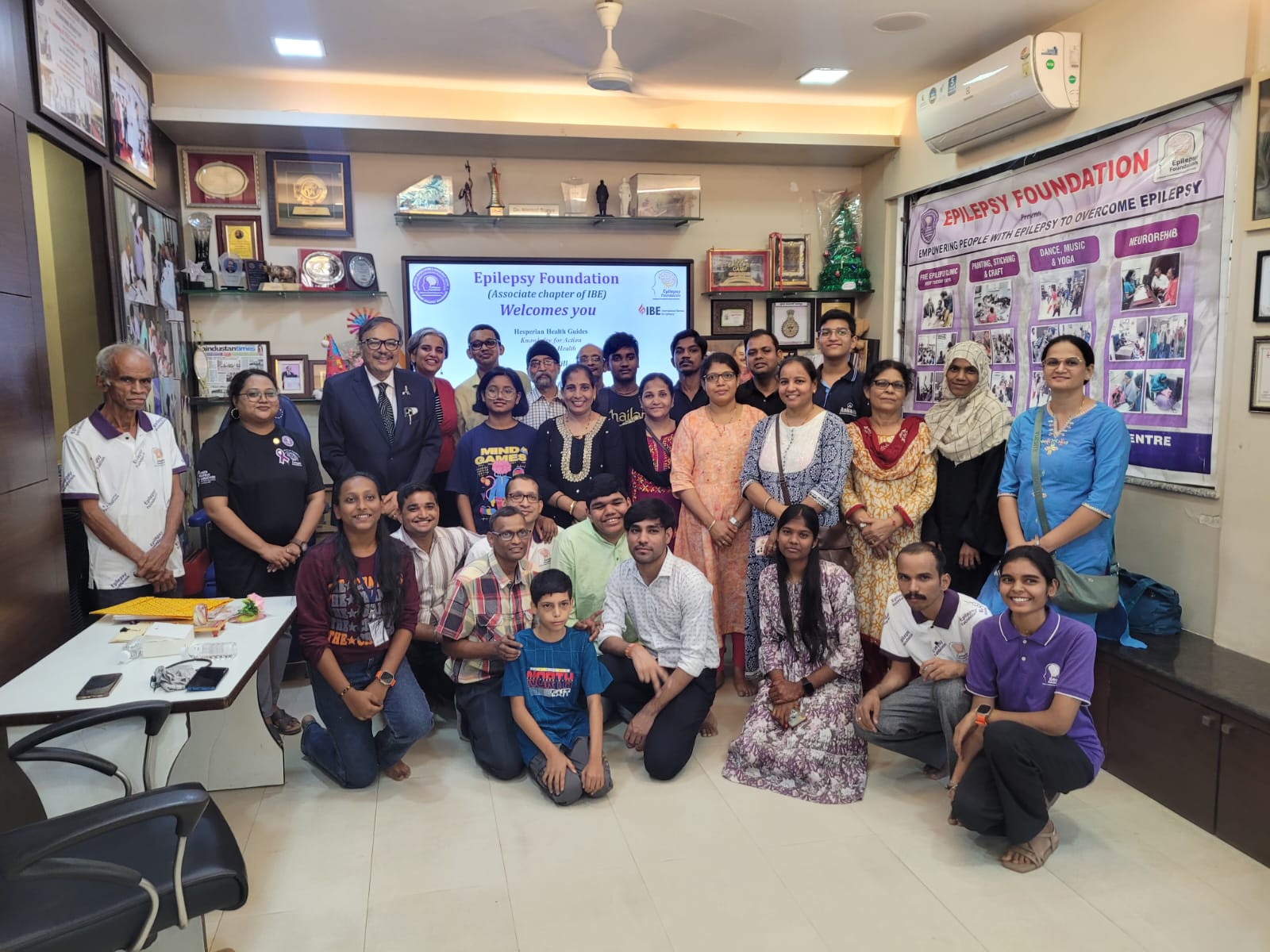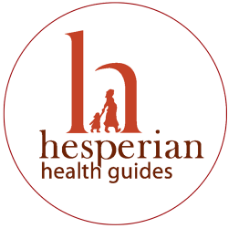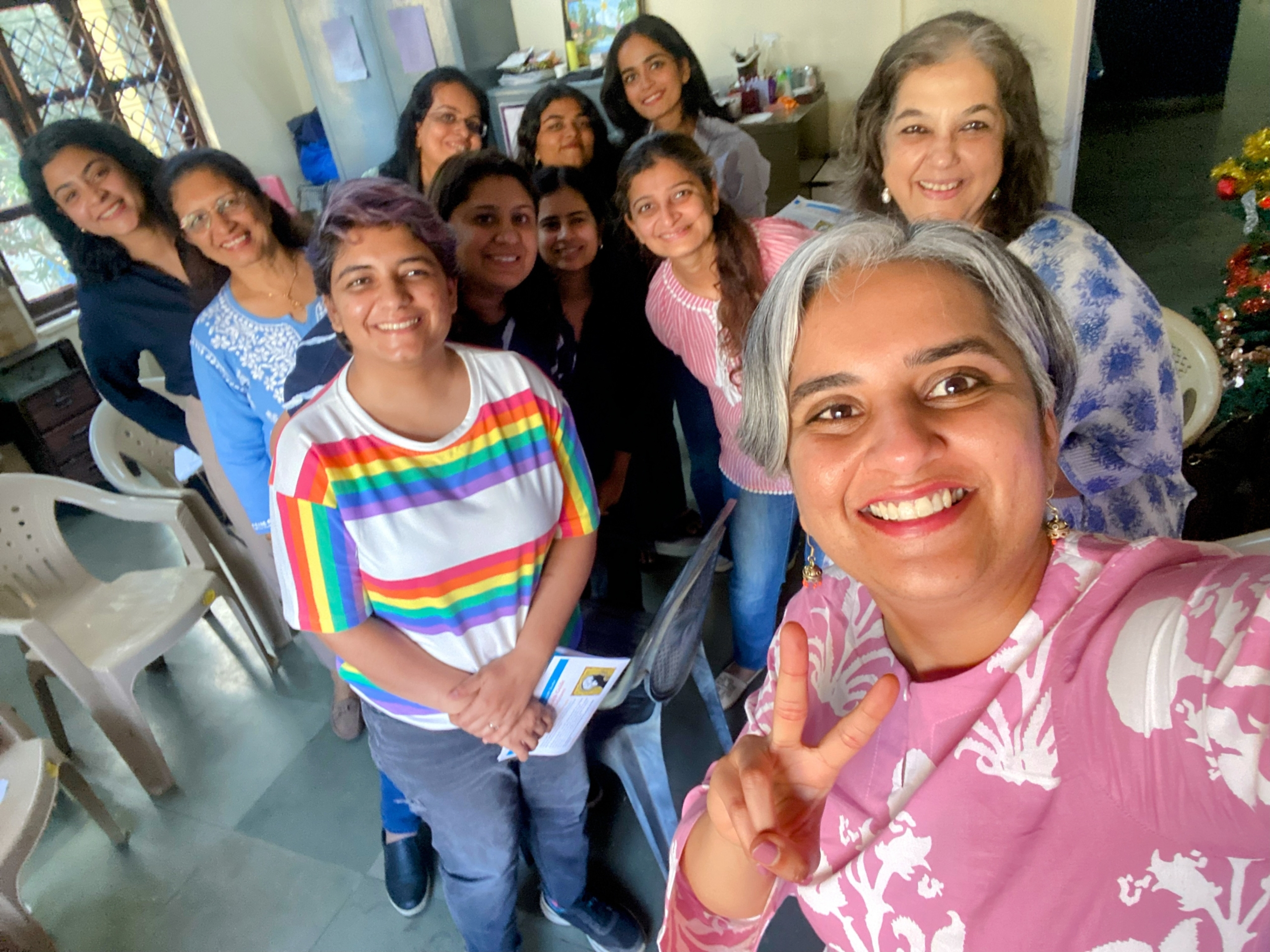Hesperian Gathers Partner Feedback for our upcoming epilepsy resource
As part of our ongoing efforts to expand and strengthen our network of global partnerships, advisors, and reviewers, Hesperian recently attended the 15th Asian & Oceanian Epilepsy Congress, hosted by the International League Against Epilepsy and the International Bureau for Epilepsy in New Delhi, India.
Staff writer and researcher, Aditi Malhotra, represented Hesperian and its Epilepsy and Seizures book project at the conference. At a one-day symposium organized by the International Bureau for Epilepsy on the sidelines of the main scientific program, Aditi presented Hesperian’s epilepsy book project and our external review process. On behalf of Hesperian, she extended an open invitation to epilepsy experts representing a wide range of backgrounds and experiences to partner with Hesperian in the book’s review process, ultimately uniting to improve community-led epilepsy care worldwide. The symposium saw participation from epilepsy advocates and researchers from Japan, Malaysia, South Korea, Sri Lanka, Nepal, Taiwan, China, Australia, among other Asian countries and Pacific Island nations.

Participants from across Asia and the Pacific Islands gathered at the Epilepsy and Society symposium hosted by the International Bureau for Epilepsy at the 15th Asian and Oceanian Epilepsy Congress in New Delhi, February 2025.
Our current network of partners for the epilepsy book comprises people with epilepsy, their families, caregivers, and friends, primary care clinicians and community health workers, neurologists, medical researchers, and nonprofit organizations working on epilepsy advocacy, stigma reduction, and overall improvement of care and treatment services and options for epilepsy. Hesperian’s editorial team has been in the process of circulating draft chapters of the book to our expanding network. We collect valuable and wide-ranging feedback through this process to ensure our resource is easy-to-understand with actionable guidance that meets the needs of our intended audience.
After the conference in New Delhi, Hesperian led and facilitated in-person focus group discussions in partnership with two Mumbai-based epilepsy advocacy organizations: Samman Association and Epilepsy Foundation India. Samman Association, the Mumbai chapter of the Indian Epilepsy Association, supports people with epilepsy and their families and caregivers. Samman organizes and hosts support groups, rural medical camps, counseling, and educational campaigns to increase awareness and community support, and reduce stigma and discrimination around epilepsy and seizures. Also based in Mumbai, Epilepsy Foundation India runs free weekly epilepsy clinics offering diagnosis, medicine for treatment, and counseling on living with epilepsy.

The group gathered at the Indian Epilepsy Foundation’s office in Mumbai, India, smiles for a photograph after the review session on a chapter on seizure first aid in Hesperian’s upcoming epilepsy guidebook.
At Epilepsy Foundation India’s Mumbai office and clinic, Aditi facilitated a Hindi-language discussion session with over 20 participants of different ages and backgrounds with epilepsy, and their family members, and caregivers. Participants offered critical and culturally-relevant feedback towards refining an early chapter in the book that focuses on how to help a person having seizures and various aspects of providing community-based seizure first aid training. The focus group discussion organized by Samman, and facilitated by Aditi, not only helped gather feedback, but generated public discussion around some new wins and older gaps in community epilepsy care in Mumbai. There emerged new ideas for content that will help refine our epilepsy book’s culturally responsive approach to seizure care and first aid. For example, participants emphasized the importance of recognizing and learning first aid for different seizure types, not just the commonly visible tonic-clonic (or “grand mal”) seizure. Participants also brainstormed a list of behaviors that might indicate a seizure but are not immediately obvious like, incoherent speech or speaking gibberish, staring with a blank face, repetitive movements of specific body parts, among other behaviors.
The group discussions also affirmed much of the research, content, and development of the chapter and book overall. In particular, participants appreciated the inclusion of a short feature story in the chapter that shows how an epilepsy care and advocacy nonprofit organization in Uganda started organizing community-based seizure first aid training in villages they served so that more people could learn about epilepsy and offer appropriate help to a person having a seizure. “It shows that anyone can make a difference and you can start small and grow,” a participant said.



